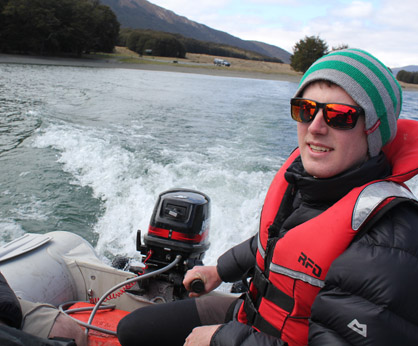The geology department at Otago has an active teaching and research programme in structural geology. Here is just a glimpse of what you could be doing whilst researching or studying structural geology at Otago.
Learn
We have a wide range of undergraduate and postgraduate papers.
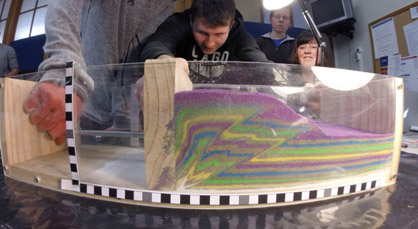
GEOL275/375 students making mountains in the lab. Photo credit: Dave Prior
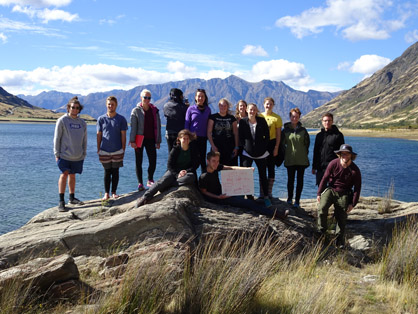
GEOL430 students after a field trip to see the Alpine Fault. Photo credit: Steven Smith
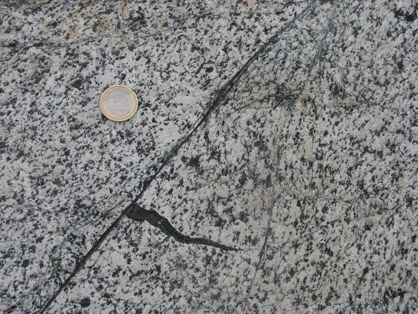
Friction-generated melt (pseudotachylyte)
Research
We have active research projects on fault zones, ice and rock deformation, and earthquake hazard.
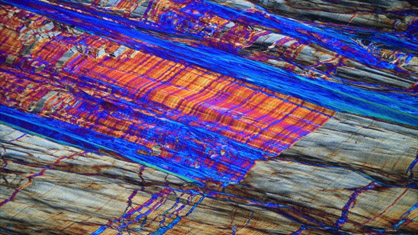
Colorful “crack-seal” banding in a serpentine vein. Photo credit: Matt Tarling
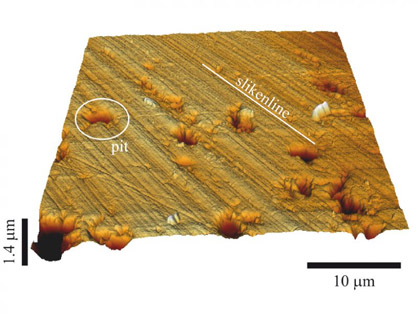
Microscopic grooves on a fault surface. Toy et al. (2017)

Point cloud of ground surface derived from laser scanning. Smith et al. (2013)
Travel
Researching structural geology at Otago gives you the opportunity to travel worldwide for fieldwork and laboratory collaborations: Europe, the US, South America and all over New Zealand.
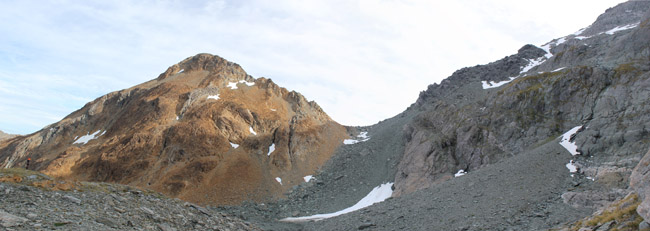
The Livingstone Fault marks the boundary between red and grey rocks in the Olivine Wilderness Area. Photo credit: Steven Smith
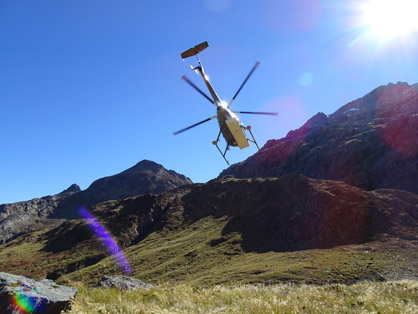
Drop off near the Olivine wilderness area, Fiordland Photo credit: Steven Smith
Contribute
We need you to help us solve important problems by studying and researching earthquake hazards, mineral deposits, flow in ice sheets, and the spectacular geological history of New Zealand and beyond.
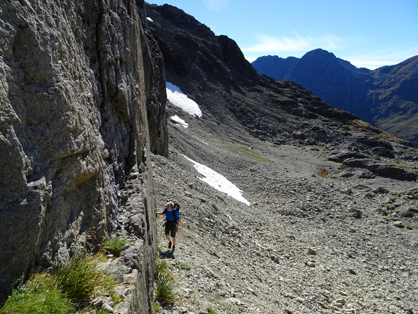
Exploring the Glade fault zone in the Earl Mountains, Fiordland. Photo credit: Steven Smith
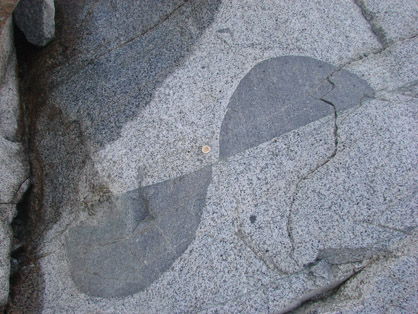
A small fault offsets a dark magmatic xenolith. Photo credit: Steven Smith
What next?
If you are interested in studying geology at Otago see:
If you are interested in postgraduate research in structural geology please contact one of these researchers:
And have a look at our postgraduate opportunities via the research opportunities database page:
